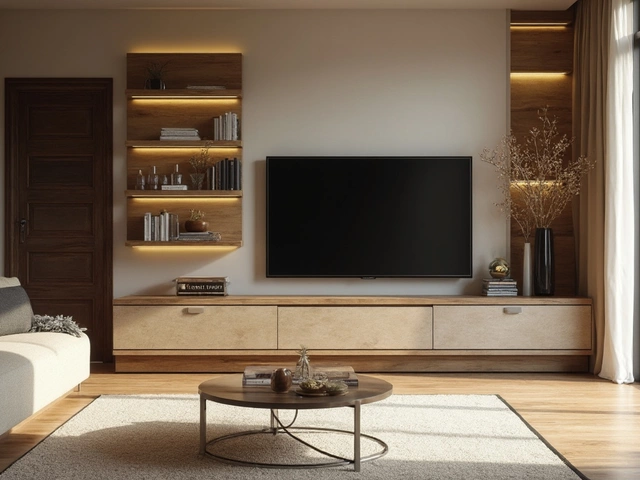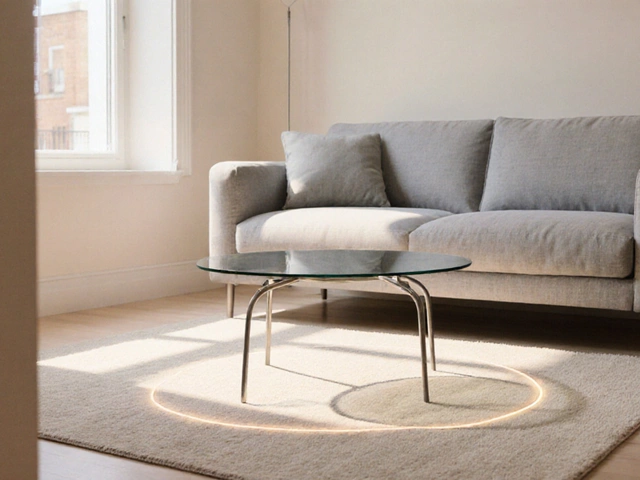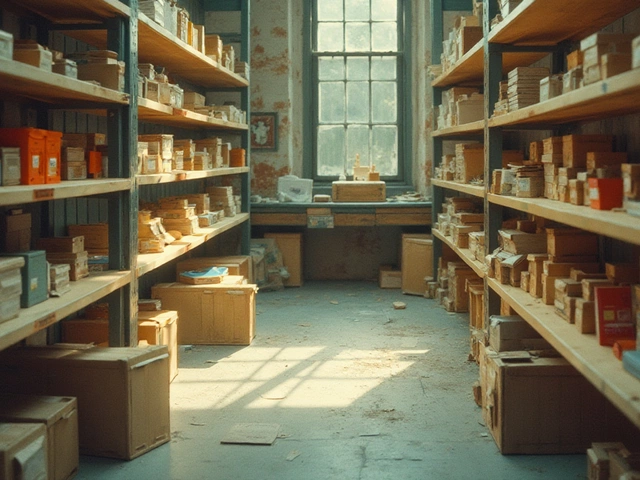Start scanning home listings and you’ll see it over and over: built-in bookcases front and center in living rooms, home offices, and even bedrooms. Ever wonder why?
Buyers usually see built-ins as a sign of a well-cared-for, thoughtfully designed home. They’re not just for holding dusty old novels either. With everyone working and relaxing from home more, built-in shelves show you’ve thought about storage, display, and making the space practical—all things people drool over nowadays.
Unlike those chunky standalone units you wrestle across the room, built-ins blend right in. They create a custom, upscale look that feels like it belongs in the home instead of just filling space. Appraisers and realtors do notice this, especially if the work looks pro and the design fits with the rest of your place.
But before you grab a drill or call a contractor, it’s smart to get clear on where the true value comes from—because not every built-in project is a home run. Let’s clear up which styles and locations actually make a difference and what shortcuts could tank your resale value later.
- Why Built-In Bookcases Catch Buyers' Eyes
- Real Value Boost or Just Stylish Storage?
- Best Rooms and Smart Design Choices
- Common Mistakes to Dodge
- Tips for Making Your Investment Count
Why Built-In Bookcases Catch Buyers' Eyes
There’s a reason that built-in bookcases show up front and center in real estate photos. They’re not just shelves—they scream character and function. Buyers see them and know the space was designed with a little extra care. It’s like finding bonus space you didn’t realize you needed until you saw it.
A big draw? Built-ins can turn an empty wall into a display area for everything from books and family photos to speakers and collectibles. And unlike clunky standalone furniture, they don’t eat up floor space. They make the room feel bigger, not squeezed in.
Many buyers today want their homes to feel "move-in ready." When they spot built-in bookcases, it’s proof the home already has that bit of custom polish. According to a survey by the National Association of Home Builders, over 70% of buyers ranked built-in storage as a "desirable" or "essential" feature—way more than fancy light fixtures or even high-end faucets.
| Feature | Percent of Buyers Who Want It |
|---|---|
| Built-In Storage | 71% |
| Freestanding Shelving | 28% |
| Fireplace (for comparison) | 55% |
And it’s not just about looks. Properly designed built-ins can hide cords, hold a TV, or keep clutter out of sight, which is a huge plus if you’re hoping your space looks clean and put-together for a showing. Even appraisers admit that built-ins help some spaces punch above their square footage, especially in smaller condos and older homes.
Bottom line: built-in bookcases draw the eye because they mix style, usefulness, and that cozy "someone thought of everything" feeling. That’s what sticks with buyers—and why these shelves don’t go out of style.
Real Value Boost or Just Stylish Storage?
So here's the big question: do built-in bookcases actually give your home's value a real bump, or do they just look cool for listing photos? The honest answer is—sometimes both, but with a few “ifs” you don’t want to ignore.
Real estate pros will tell you that interior design “wow” features can help a home sell faster, often for a higher price. In fact, the National Association of Realtors reports that well-finished built-ins can return anywhere from 50% to 70% of their cost when you sell. That’s not bad, especially when you line it up against other upgrades like fancy light fixtures or paint.
But there’s a catch: only quality installations that feel like they fit the home are likely to get noticed, both by buyers and by appraisers. A bookshelf jammed in a weird corner or painted in fluorescent green isn’t going to help your bottom line. Built-in shelves that match your home’s style—think minimalist for a modern design, or chunky molding for a classic vibe—make buyers feel like they're buying useful space, not just furniture attached to a wall.
- Custom work almost always beats DIY “quick fixes.”
- Matching the built-in to other storage or trim in your home boosts its impact.
- Functionality wins: shelves with space for a TV, lighting, or hidden wires get extra points.
Here’s a quick look at how buyers see built-ins compared to other storage:
| Storage Type | Perceived Value | Buyer Appeal |
|---|---|---|
| Standalone bookcase | Low | Easy to move, but not unique |
| Basic shelves (non-custom) | Medium | Useful, but not impressive |
| Built-in bookcases | High | Custom look, makes space feel larger |
Bottom line—when you go with well-designed, well-finished built-in bookcases, you’re adding more than just a spot for your mystery novels. You’re adding a feature buyers remember and real value they’re willing to pay more for.
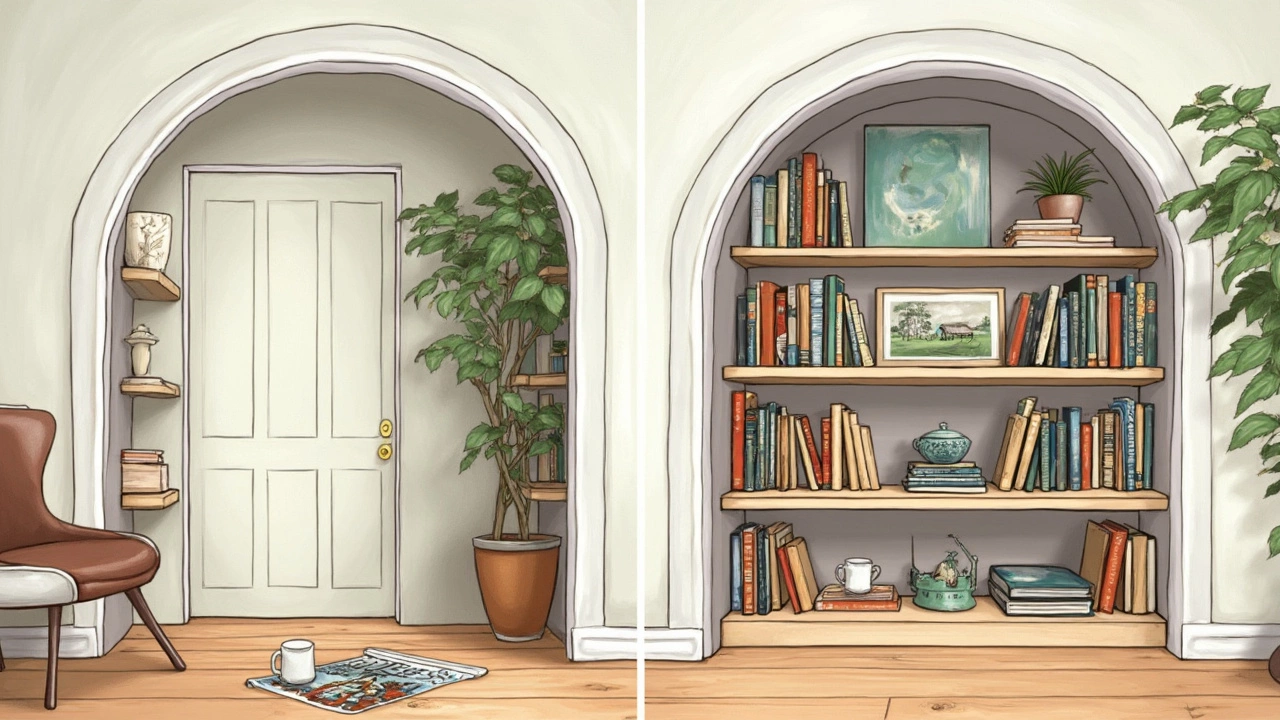
Best Rooms and Smart Design Choices
If you want built-in bookcases to actually boost your home's value, you have to choose the right spot and the right look. Not every room is created equal for this kind of project.
The living room sits at the top of the list. This is where buyers expect to see custom touches—think around a fireplace, flanking a TV, or even filling a weird nook that’s tough to use otherwise. Home offices are another solid bet, especially these days. If you're decked out with wall-to-wall shelving, it instantly screams "organized and professional." Bedrooms? Can work, but usually only if space is tight, like in kids’ rooms where toy storage doubles as book space.
Family handymen agree: built-ins near entryways can also keep clutter down and impress visitors. Think cubbies for shoes, shelves for bags, and a spot for mail. Kitchen bookcases have started showing up too, mostly as cookbook shelves or display spots for nice dishes.
"Built-in shelves in key rooms can add real, tangible value to a house—it’s about turning dead space into something useful and sharp-looking," notes the National Association of Realtors’ 2024 report on home upgrades.
Your design choices should match your home’s style. If your place is super modern, skip the fussy trim. Go simple and streamlined. In older homes—think craftsman or colonial—use crown molding or glass doors to fit the vibe. Painted built-ins blend in for a subtle look, while stained wood can become the room's centerpiece.
One thing to keep in mind: not every built-in has to be floor-to-ceiling. Waist-high units can work under windows or along hallways, giving you handy storage without taking over the room. If you're worried about overdoing it, try:
- Adding display lighting—makes shelves pop and shows off collections or photos.
- Leaving some open space above for art or a TV.
- Mixing in cabinets below to hide the boring stuff (Wi-Fi routers, kids’ games).
Here's what realtors noticed in 2024 sales about which rooms scored best with buyers:
| Room | Buyer Appeal (out of 5) |
|---|---|
| Living Room | 4.8 |
| Home Office | 4.5 |
| Entryway | 4.2 |
| Bedroom | 3.7 |
So before busting out the tools, map out your plan based on where the shelves will get real use—not just where there’s an empty wall. That’s the kind of move that gets noticed when it’s time to sell.
Common Mistakes to Dodge
A lot of folks show off their DIY skills with built-in bookcases only to end up with regrets. Some mistakes will straight up hurt your home value. Here’s where people slip up the most—and how to make sure you don’t join them:
- Bad Fit and Awkward Placement: Jam a built-in somewhere it doesn’t belong or size it wrong, and it looks more like an afterthought than a feature. Bookcases that block windows, vents, or outlets are an instant turnoff for buyers. Always measure for depth and height, and make sure doors and walkways are clear.
- Cheap Materials: Particle board and flimsy hardware will cheapen the whole vibe. When buyers spot peeling laminate or sagging shelves, they wonder what else is low quality in the house. It's smart to use at least plywood or solid wood for shelves if you want your investment to last and impress.
- Permanent Layout Problems: Don’t box yourself (or future owners) in with a wall-to-wall setup that leaves zero room to rearrange. Built-ins that eat up too much space or hog a whole wall in a small room can make the square footage feel even tighter.
- Neglecting Style Harmony: Clashing with the rest of your home’s style—think ultra-modern shelves in a 1920s bungalow—confuses buyers. Match trim, color, and design details to your home’s age and vibe.
- Poor Installation: Wobbly or tilted bookcases not only look bad, they’re also unsafe, especially if you have pets like my cat Whiskers who loves to climb. Either commit to pro-level skills or, if in doubt, call in someone with experience.
According to a Redfin study, homes with well-placed built-in bookcases fetched up to 3% more on average, but only if they were high quality and didn't take up precious floor space in a way that hurt functionality.
| Mistake | Impact on Value |
|---|---|
| Poor Material Quality | -2% to -5% |
| Awkward Placement | -1% or long time on market |
| Mismatch with Style | Lower buyer interest |
Avoid these mistakes and your built-in bookcases become a selling point instead of a hassle.
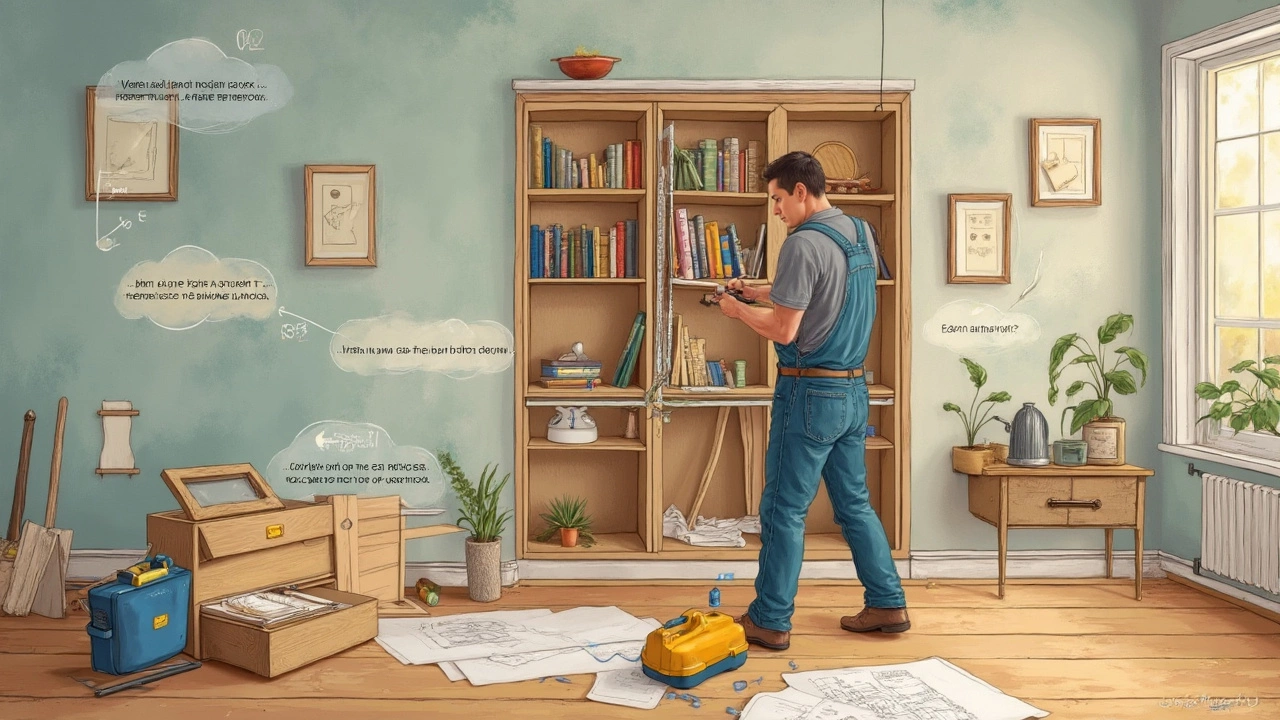
Tips for Making Your Investment Count
Want to make sure your new built-in bookcases actually boost your home value and don’t just end up a quirky afterthought? Here are some no-nonsense tips to keep you on track.
- Keep it classic. Super bold colors or wild shapes might be fun for you, but neutral shades and streamlined designs are what most buyers want. White, off-white, and warm woods tend to age well and fit with almost any style.
- Match your home’s vibe. If your house leans modern, don’t go all ornate and old-school with your shelves. If you’ve got a cozy cottage, skip the glossy, sharp-edged look. Make it feel like it was always meant to be there.
- Don’t block natural light. Placing a bookcase in front of windows or in dark corners can make spaces feel smaller. Instead, use bookcases to frame fireplace mantels, tuck into unused alcoves, or run along an empty wall.
- Quality shows. Cheap materials or wobbly construction are easy to spot. Solid wood or high-quality MDF painted well usually impresses more than particleboard. If you’re hiring someone, check their past projects or reviews first.
- Add outlets and lighting. Nothing beats a built-in with a couple of USB ports or a reading light above the shelf. Small upgrades like this make your shelves more useful—especially in home offices and living rooms.
- Flexibility matters. Adjustable shelves, or a mix of open and closed storage (think cabinets at the bottom), appeal to lots of buyers. It’s way more useful for everything from books to board games to pet supplies. (Whiskers thinks hidden cabinets for litter boxes are a must, but you do you.)
Here’s how the investment tends to play out, according to home listing stats from 2024:
| Feature | Perceived Value Boost |
|---|---|
| High-quality built-ins, main living room | 2-5% rise in listing price |
| Poorly installed or damaged built-ins | No increase or even negative reactions |
| Basic shelving in bedrooms/closets | Small, positive bump |
The main takeaway: put some thought into design and quality, and your built-in bookcases can totally make your place stand out when it’s time to sell.


